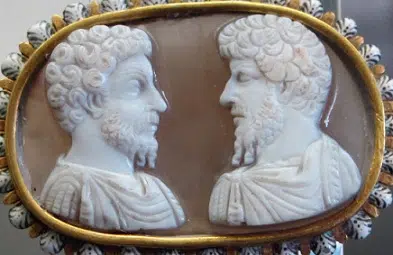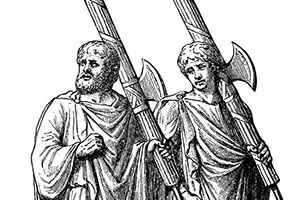 The government exercised by two monarchs simultaneously is known as diarchy . The term refers to the authority that is divided between two powers, institutions or individuals.
The government exercised by two monarchs simultaneously is known as diarchy . The term refers to the authority that is divided between two powers, institutions or individuals.
In a dyarchy, two rulers are responsible for administering the State . This form of government was in force in Rome , Sparta and other ancient societies and can also be found in the present in various regions.
The usual thing is that diarchy arises if there is no power that stands out and, in this framework, the two with the greatest strength agree to work together. This is how they manage public affairs.
In periods of Ancient Rome , for example, two consuls had the responsibility of alternating at the head of the army and the government . The diarchy of Sparta , meanwhile, emerged around the 8th century BC . A political reform caused this polis to begin to be administered by a couple of kings or diarchs, one who was part of the Eurypontida dynasty and the other, from the Agiada group.
Precisely, the joint reign of the Eurypontidas and the Agíadas is a clear example of diarchy in ancient Sparta, one of the most relevant polis of ancient Greece, in addition to Corinth, Thebes and, of course, Athens. With respect to the Eurypontidas we can say that they were a dynasty founded by the third king of Sparta, Euryponte , who used his name as a basis for baptizing it.
Euryponte, also called Euripon , was the twin brother of Agis I , another important Spartan king, who founded his own dynasty: that of the Agíadas. While the Eurypontes dynasty is considered to be of Achaean origin , the Agíadas were of Dorian origin. Both terms respond to two of the following four Greek tribes of antiquity: the Ionians, the Aeolians, the Achaeans and the Dorians.
Returning to the Roman Empire, historians often cite a diarchy that dates back to the origins of Rome, and it is that composed by Romulus and Titus Tatius . It arose after the war with the Sabines, an ancient people prior to the Empire that is related to the Ligurians, the Aequi, the Latins and the Etruscans, among others.
 In a previous paragraph a Roman diarchy formed by two consuls is mentioned. Although in theory both had the same rights and dignities, in practice the management of power was usually different. It is enough to study the diarchy of Julius Caesar and Marcus Calpurnius Bibulus : the former surpassed the latter in charisma, who took refuge in his home instead of fighting. This lack of commitment and action on one side gave rise to the nickname "the consulate of Julius and Caesar."
In a previous paragraph a Roman diarchy formed by two consuls is mentioned. Although in theory both had the same rights and dignities, in practice the management of power was usually different. It is enough to study the diarchy of Julius Caesar and Marcus Calpurnius Bibulus : the former surpassed the latter in charisma, who took refuge in his home instead of fighting. This lack of commitment and action on one side gave rise to the nickname "the consulate of Julius and Caesar."
The Republic of San Marino is a case of dyarchy in the 21st century . It is an enclave whose lands are surrounded by the surface of Italy . In San Marino , citizens elect members of parliament: the Great and General Council .
This legislative body, in turn, selects two of its members to act as captains regent . Both captains regent serve as heads of state for six months, so it can be said that San Marino is a diarchy.
One of the concepts that are associated with dyarchy is duumvirate . It is not a synonym, although its meaning is related by some of its characteristics: it is an alliance made by two leaders of the army or political forces. A clear example today is the Principality of Andorra , an independent State in the southwest of the European continent, since it is a duumvirate made up of two co-princes: the bishop of Urgell and the president of the French Republic.
